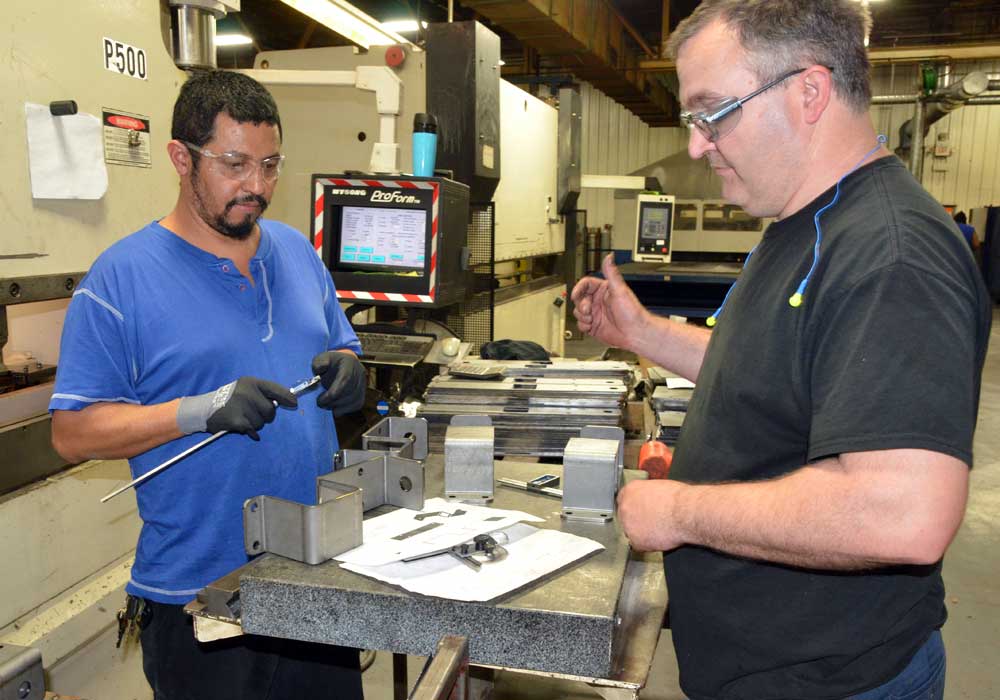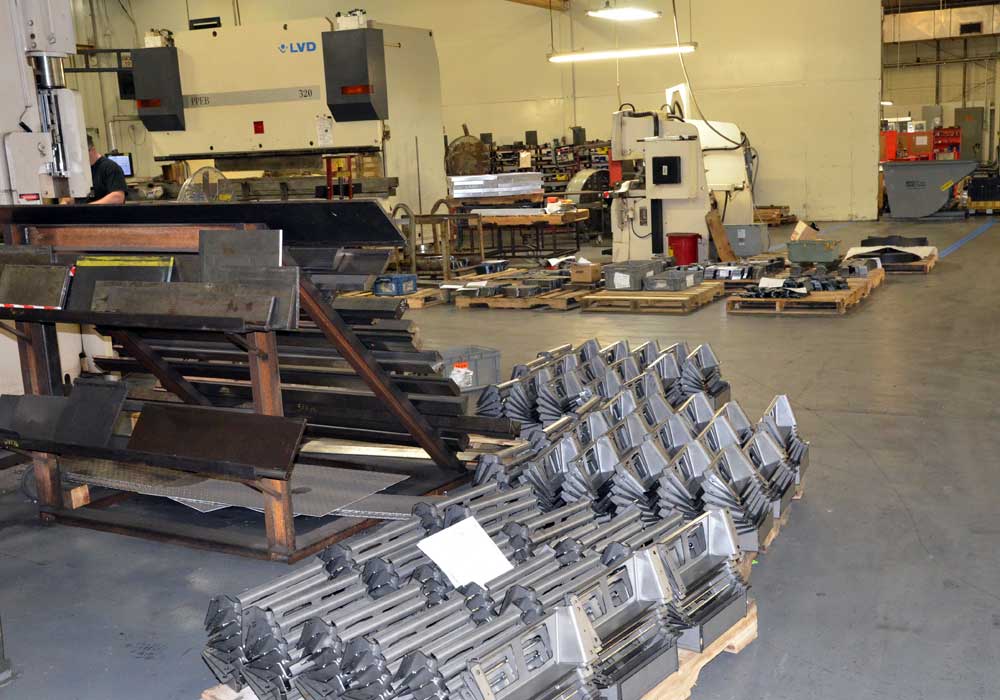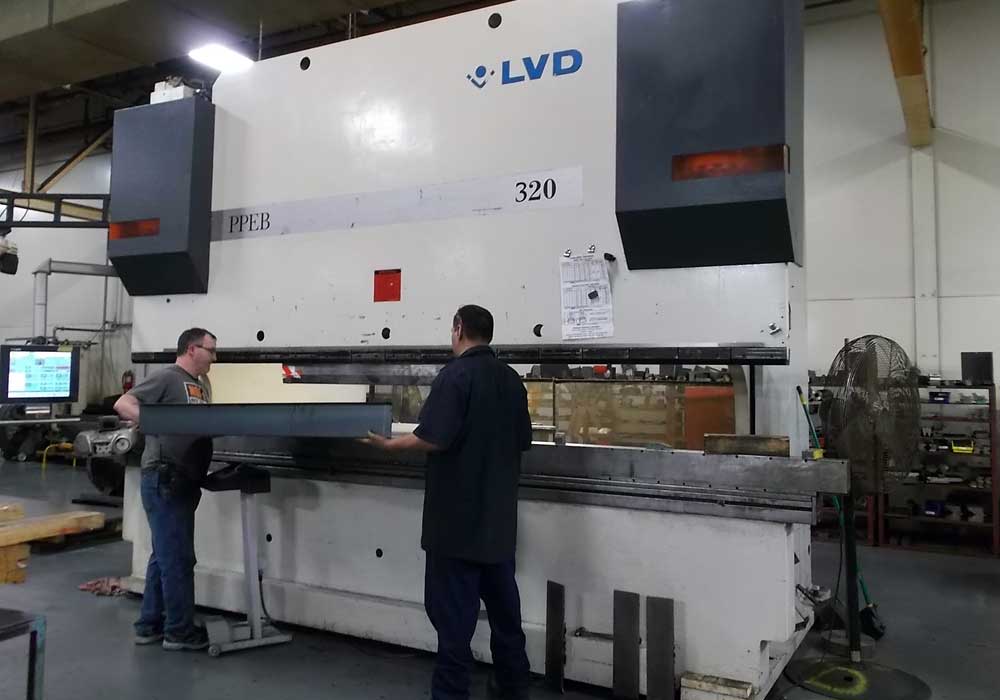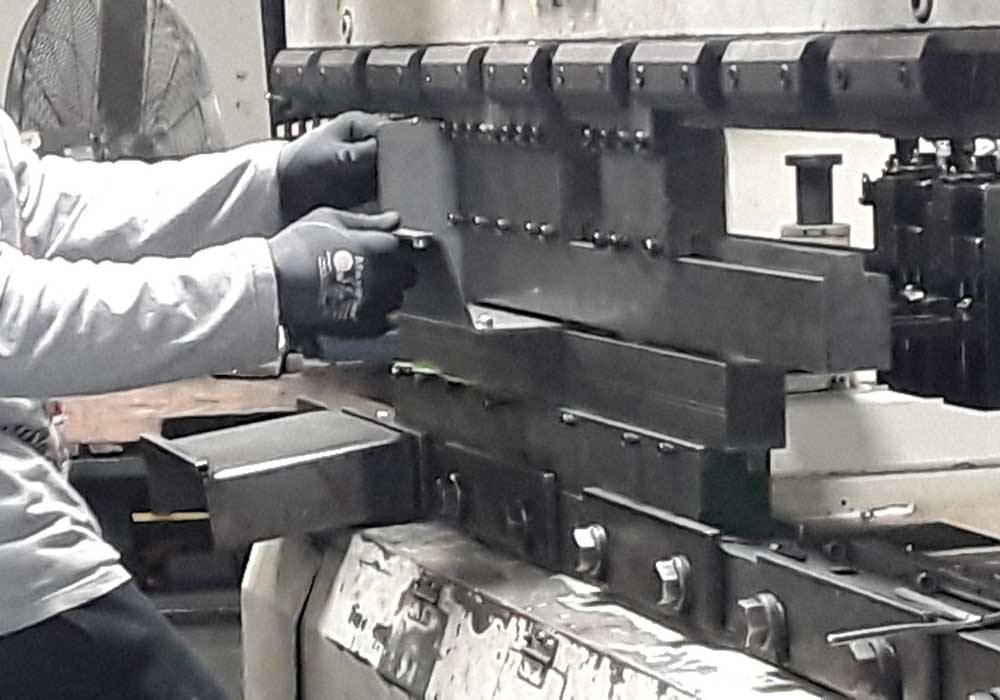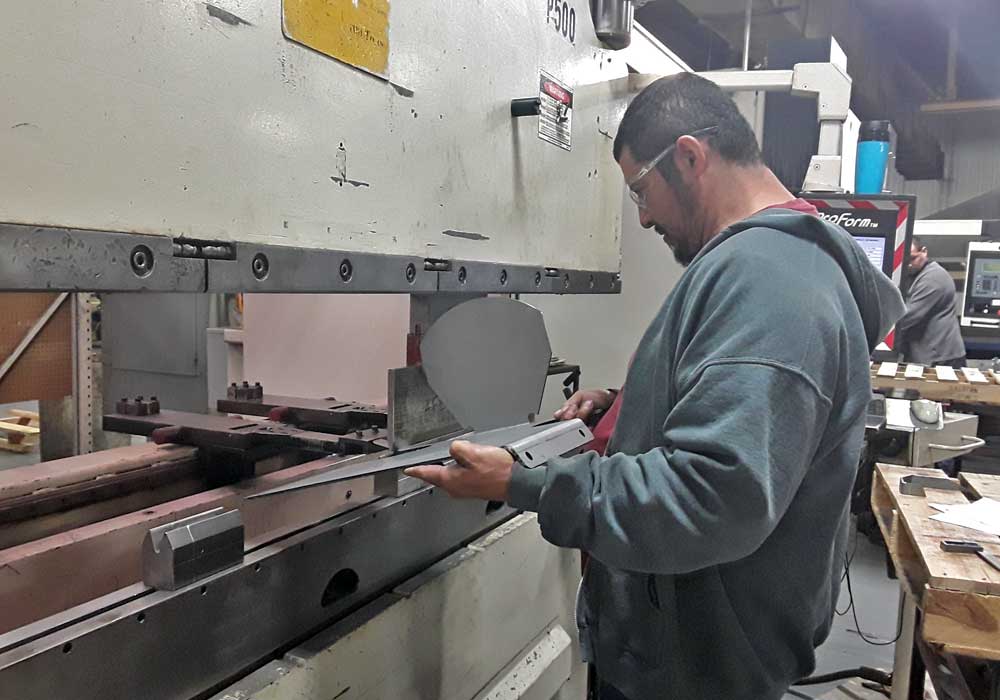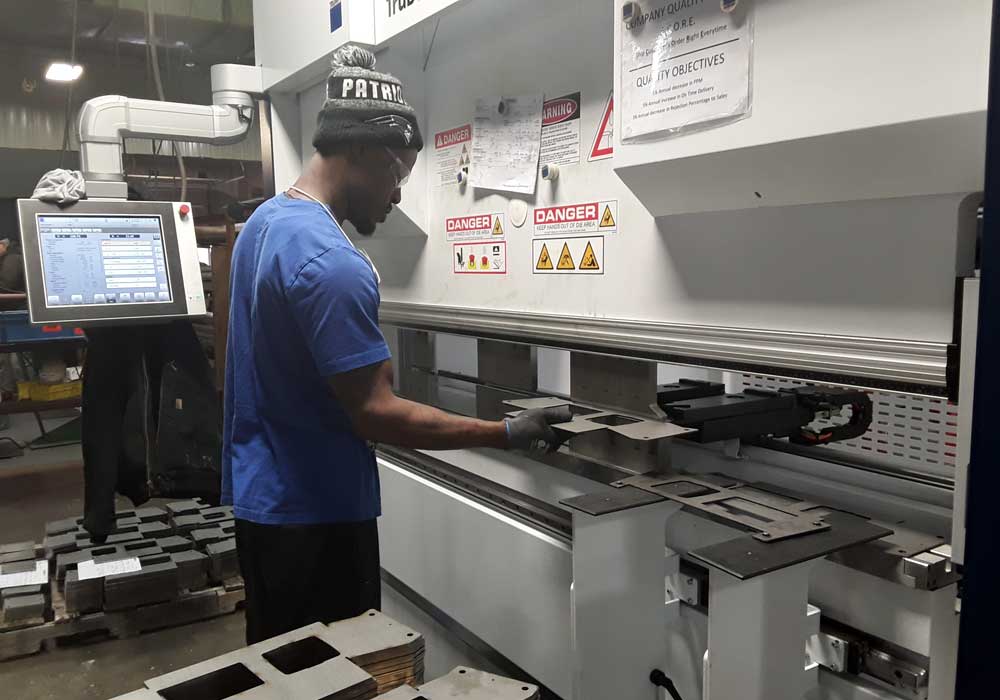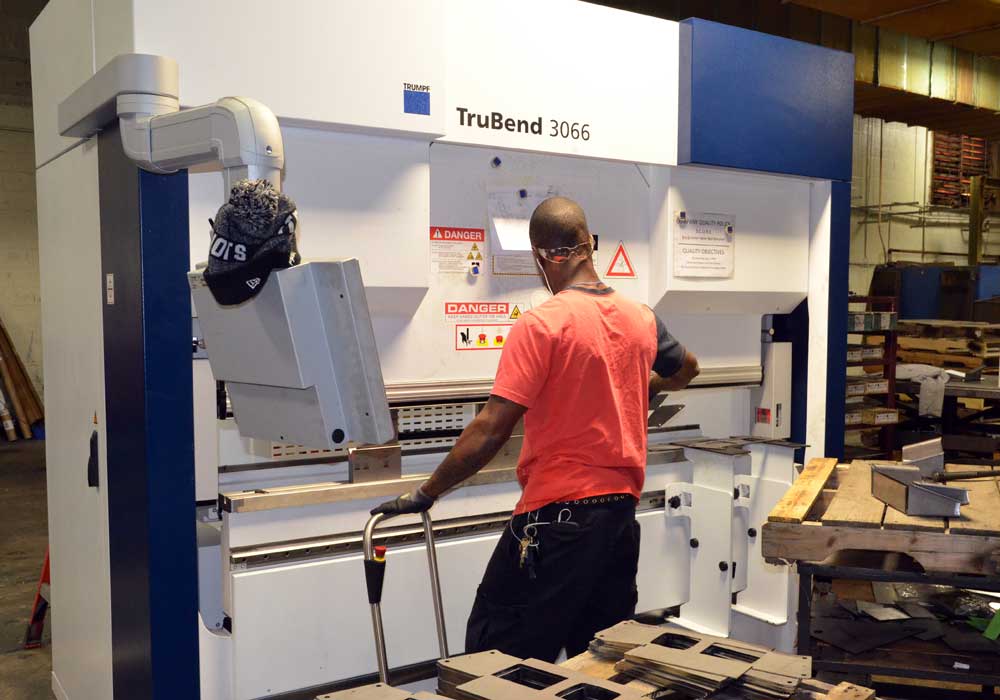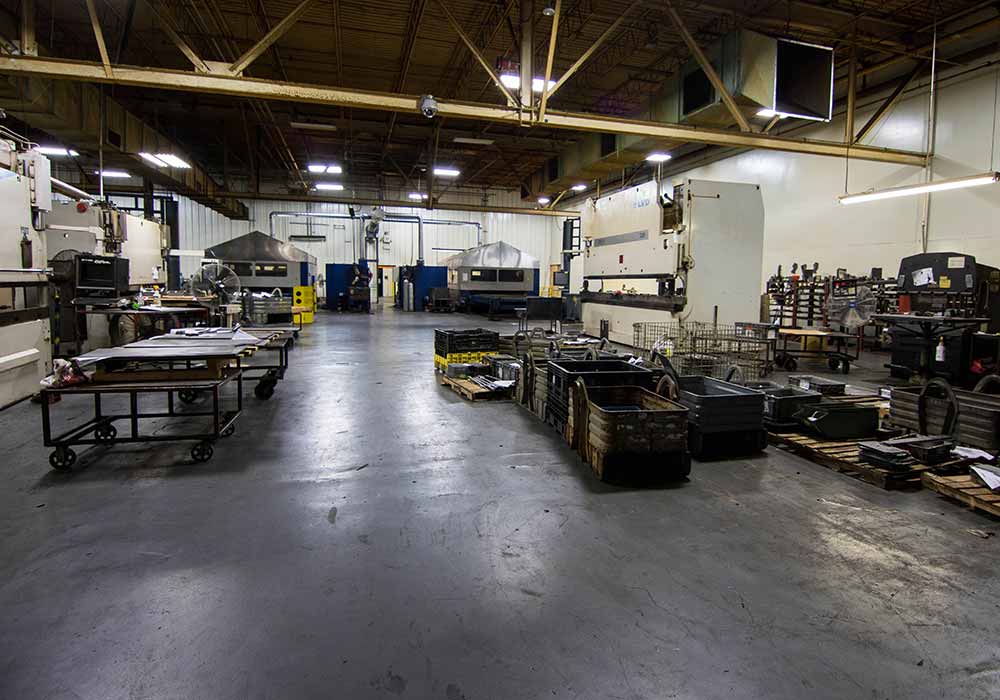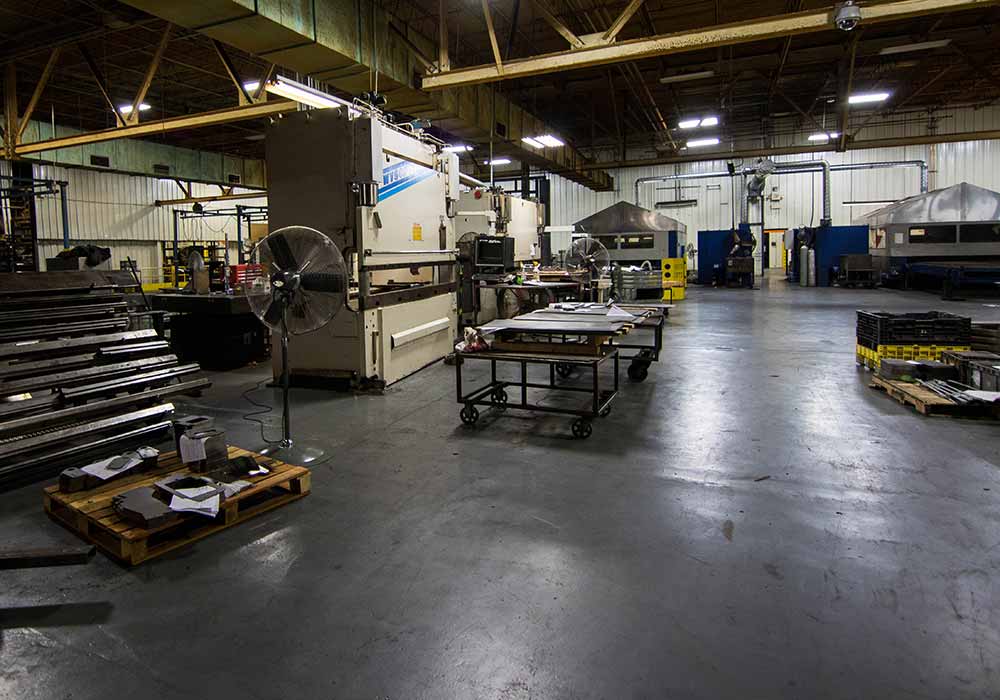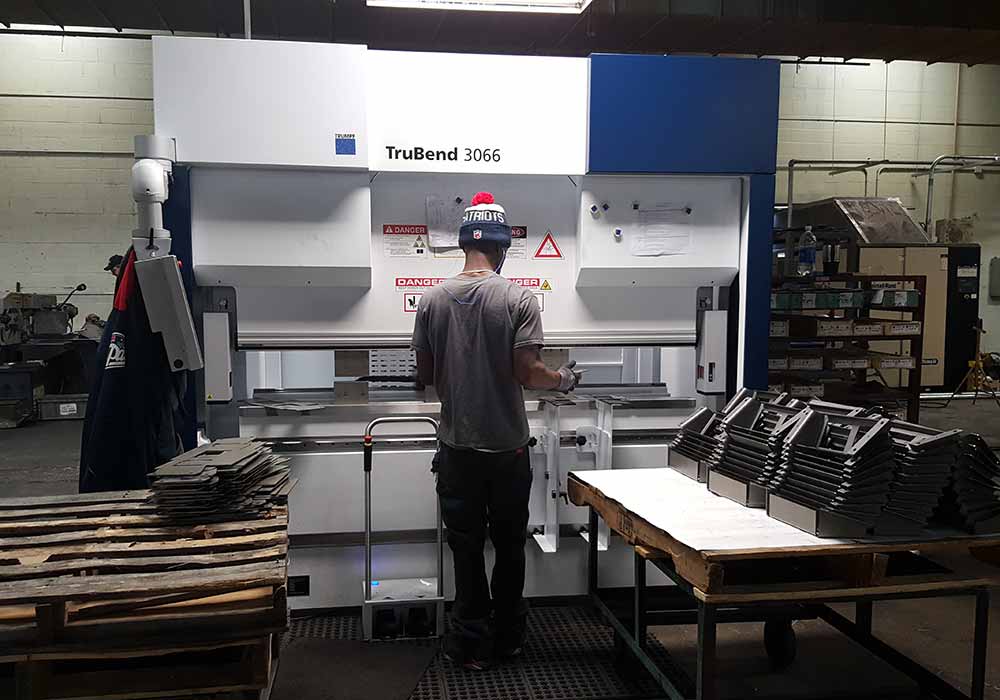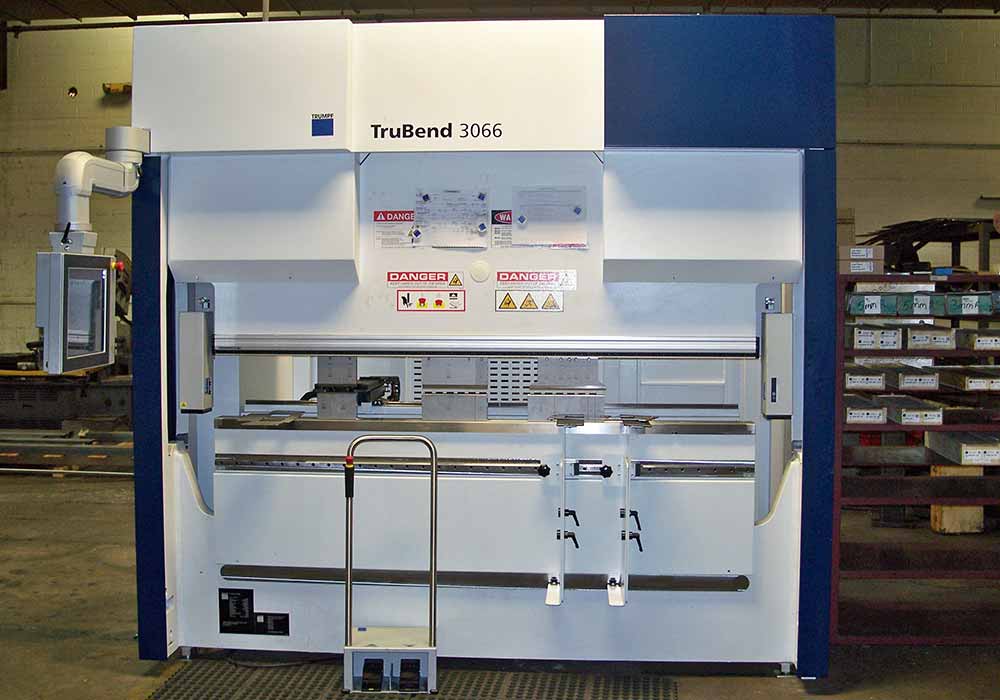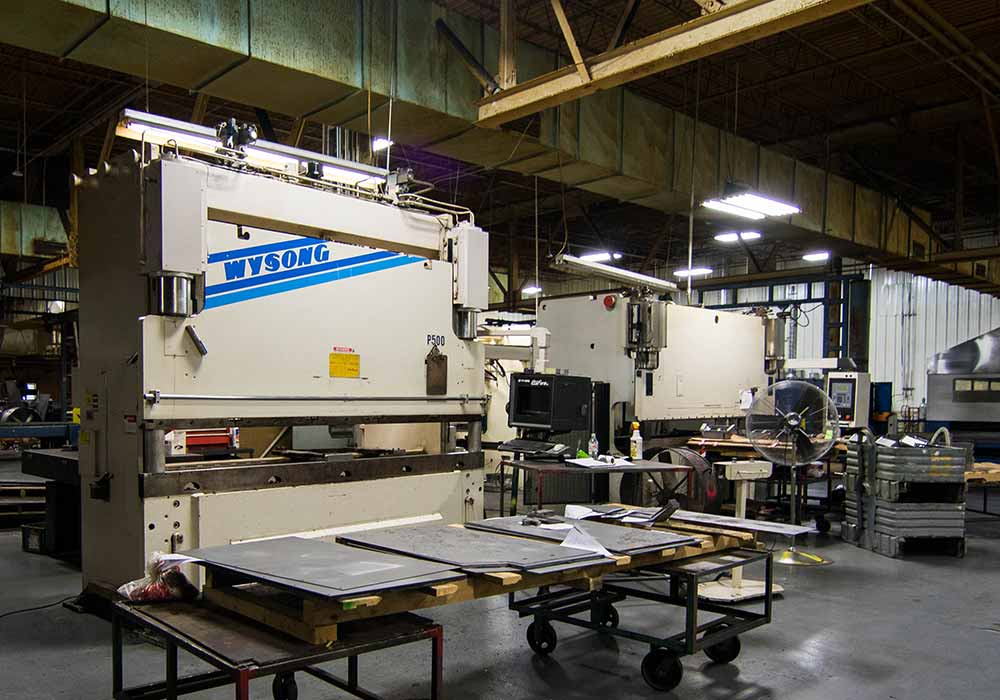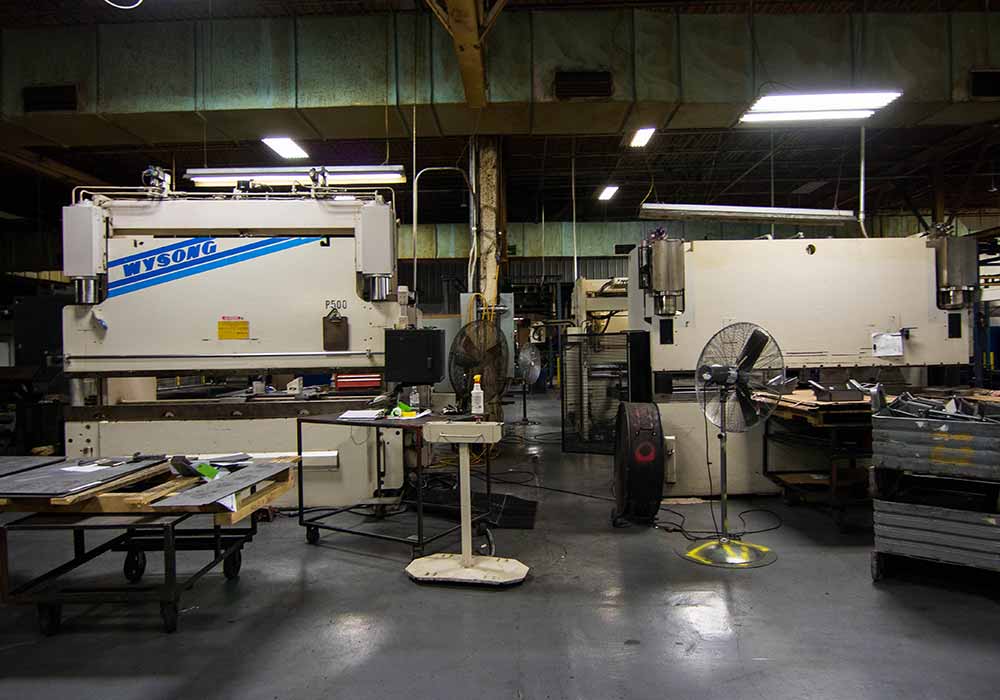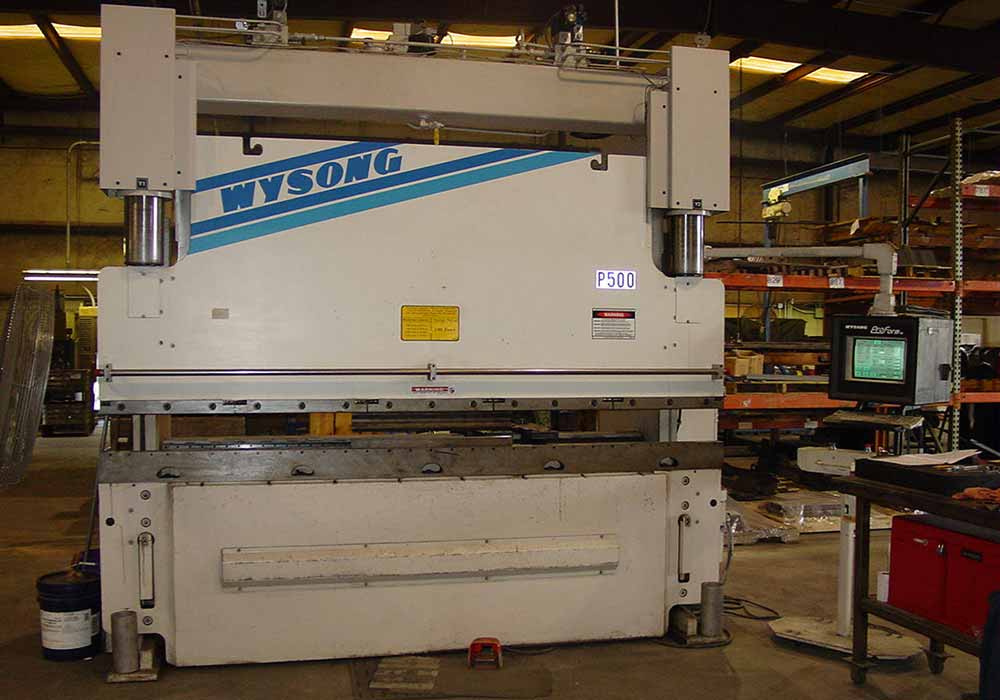In press brake forming, a work piece is positioned over a die block while a punch presses the sheet into the die to form a shape.
Usually, bending has to overcome both tensile stresses and compressive stresses. When bending is done, the residual stresses cause the material to spring back towards its original position, so the sheet must be over-bent to achieve the proper bend angle. The amount of spring back is dependent on the material, and the type of forming.
When sheet metal is bent, it stretches in length. The bend deduction is the amount the sheet metal will stretch when bent as measured from the outside edges of the bend. The bend radius refers to the inside radius. The formed bend radius is dependent upon the dies used, the material properties, and the material thickness.
Three Types of Forming by Brake Press Operations:
- Air Forming allows us to use the same die and punch to make a range of bend angles and radius’ when tolerances are wide enough to do so.
- In Bottoming, the sheet is forced against the V opening in the bottom tool. U-shaped openings cannot be used. This is a little more costly than Air Forming in that each tool is for a particular angle and radius.
- Coining, the top tool forces the material into the bottom die with 5 to 30 times the force of air bending, causing permanent deformation through the sheet. There is little, if any, spring back. Coining can produce an inside radius smaller than the material thickness. While coining can attain high precision and repeatability, it also means higher cost so is not used as often.


